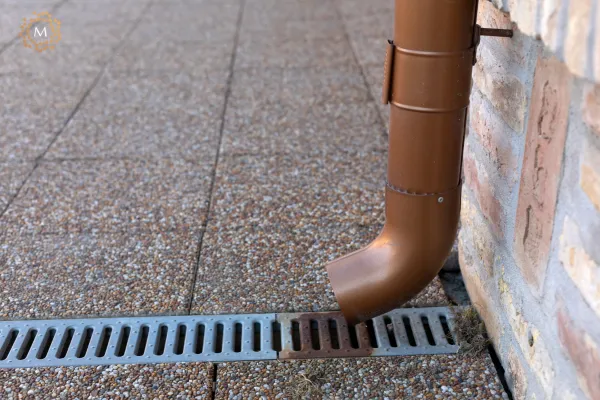
Understanding Surface Water Drainage: A Guide for UK Property Owners
As the UK experiences more frequent and intense rainfall, it's increasingly important for property owners to understand their legal obligations regarding surface water drainage. Inadequate drainage can heighten the risk of flooding and cause excess water to overflow onto neighbouring land or public highways—potentially leading to disputes, complaints, or even legal consequences.
Whether you're collaborating with bespoke builders on a new custom home or carrying out renovations to your existing property, staying informed about drainage regulations is a key part of responsible homeownership and effective property development.
What Is Surface Water Drainage?
Surface water drainage involves the methods and systems used to manage rainwater that lands on hard surfaces like roofs, patios, driveways, and paved areas. The goal is to safely channel this water away from the property—typically into drainage networks, streams, or other watercourses—to avoid flooding and water damage.
Effective drainage is especially crucial in bespoke construction projects and for property developers overseeing multiple sites, where poor water management can lead to costly and lasting problems.
The Law on Surface Water Drainage in the UK
The main legislation governing this area is the Flood and Water Management Act 2010. This law was introduced to tackle increasing flood risks caused by urban development and climate change.
Key Points of the Act:
Sustainable Drainage Systems (SuDS): The Act encourages the use of SuDS, which manage water runoff more sustainably. Examples include permeable paving, green roofs, and rainwater harvesting.
Drainage Approval Required: Any construction work that affects drainage—like new patios, extensions, or driveways—must include an approved drainage plan before work begins. This applies to both individual homeowners and bespoke construction companies involved in residential development.
Flood Prevention Focus: The law emphasises proactive steps to manage surface water runoff and reduce flooding risk in homes and local communities, especially during bespoke builds and custom development projects.
What Are Your Responsibilities as a Property Owner?
Homeowners are legally required to ensure that water runoff from their property does not cause flooding or damage elsewhere—whether it’s the pavement, road, or a neighbour’s garden. Failure to manage drainage properly can lead to enforcement notices or legal claims.
This responsibility also applies to bespoke home builders and anyone developing house plots on a small or large scale.
Practical Ways to Manage Surface Water
Fortunately, there are several simple and cost-effective ways to manage runoff:
Water Butts: Capture rainwater from your roof and reuse it in the garden.
French Drains: Gravel-filled trenches with a perforated pipe that redirect water away from buildings.
Permeable Surfaces: Replace impermeable paving with materials that allow rain to soak into the ground.
These solutions are commonly implemented by bespoke builder teams and bespoke building services to ensure homes are sustainable and compliant from the start.
Legal Implications of Water Runoff
If water from your property causes damage to someone else’s land or a public area, you could be held legally responsible. Here’s what you need to know:
Natural vs. Artificial Runoff: Natural flow from higher to lower ground is generally permitted. However, water redirected by man-made changes (like guttering or paving) must be managed so it doesn’t affect others.
Discharging Water to a Neighbour’s Land: You cannot channel water—such as from a downpipe—onto your neighbour’s property without their consent.
Common Law and Drainage Rights: While natural drainage between properties is allowed, altering or increasing that flow (especially through artificial means) may breach common law rights unless you’ve installed proper systems.
Bespoke construction professionals typically design homes with these rules in mind, ensuring any alterations made during a bespoke custom build project won’t lead to future liability.
Changes to Drainage Regulations
The introduction of SuDS regulations in 2015 marked a turning point in drainage law. These now require new developments and major renovation projects to include sustainable drainage strategies from the outset.
SuDS Regulations Highlights:
Mandatory for New Builds: Local authorities now have greater powers to ensure SuDS are included in planning permissions.
Key Benefits: SuDS reduce flood risk, improve water quality, and help the environment by promoting natural infiltration.
These updates are especially relevant for bespoke construction companies and house builders working on new housing estates or renovating older properties with outdated drainage systems.
Conclusion
Managing surface water runoff isn’t just about avoiding floods—it’s also about staying on the right side of the law. By understanding your responsibilities and taking proactive steps, you can protect your home, your neighbours, and the local environment.
If you're working with a bespoke builder or overseeing a developing house project, drainage should be considered from the design stage. For expert advice, consult with drainage specialists or bespoke building services who understand both legal requirements and modern building techniques.
Staying informed and compliant ensures that your property—and your peace of mind—remain protected.

